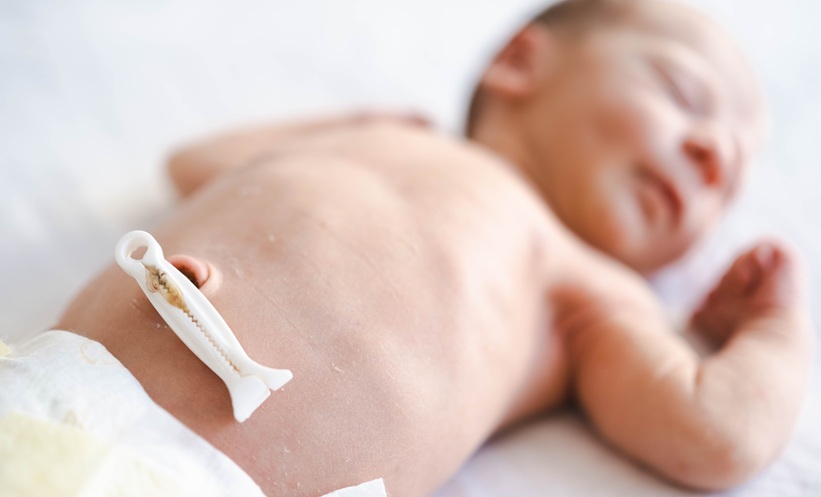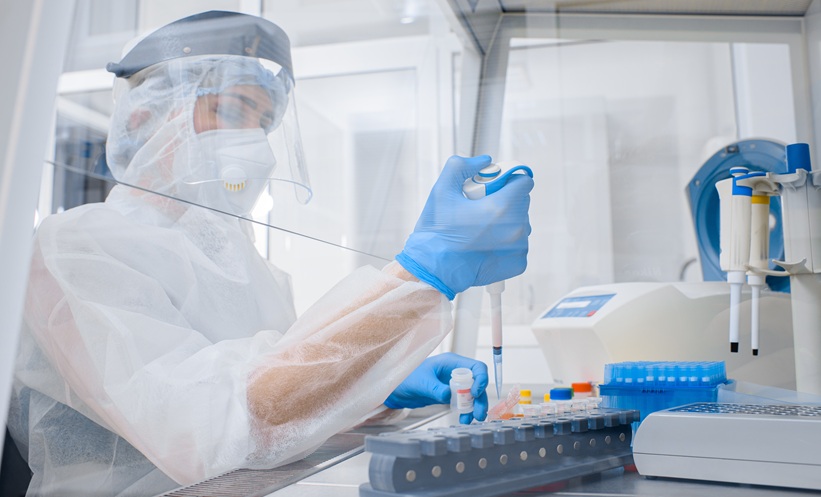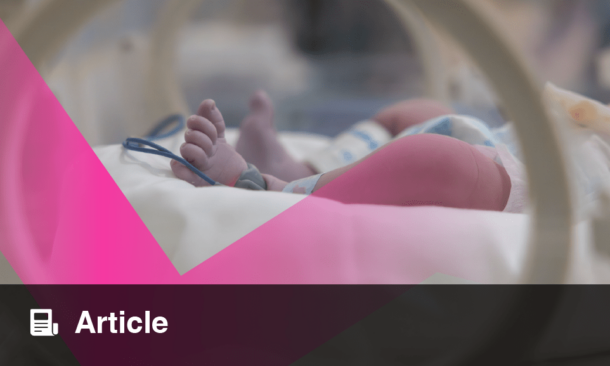Timothy R. Walsh | Director of Biology, Ineos Oxford Institute for Antimicrobial Research; Professor of Medical Microbiology, Department of Biology, University of Oxford, UK
Citation: EMJ Microbiol Infect Dis. 2025;6[1]:56-61. https://doi.org/10.33590/emjmicrobiolinfectdis/DKVT9894.
![]()
You have discovered and named some of the most notorious antibiotic resistance genes, NDM-1 and MCR-1. Can you walk us through these discoveries and their implications for patient care?
We discovered NDM-1, which stands for New Delhi metallo-beta-lactamase, at the end of 2009, but nobody cared about it too much at the time; it was just a new gene. Then we started to collaborate with a UK reference lab in London, headed up by David Livermore, University of East Anglia, UK. At the time, a growing problem within UK clinics, particularly with patients coming back from India, was what we call medical tourism, or overseas surgery. There are lots of warnings now going on in the UK press regarding this, but at the time virtually no one had heard of medical tourism. This is a contemporary issue, not just with overseas surgery but also with private surgery within the UK not being as thorough in terms of preventing infections.
We started to link the existence of the antibiotic resistance gene NDM-1 to patients returning to the UK from overseas travels, particularly from India. When we wrote our article on 10 August 2010, we referred to medical tourism, or added-value travel. Because we wrote that one line in the discussion, we got into all sorts of trouble with the Indian authorities and government. There was a lot of hate going on. I was accused of working for MI6. It was a crazy time.
Even back then, before X (Twitter, Inc., San Francisco, California, USA), before Instagram (Menlo Park, California, USA), we had 4.7 million internet hits in 2 days. We were the number one topic on the BBC six o’clock news. We were doing interviews with Al Jazeera, Channel Four, Channel Five, the American networks. It was just everywhere. That was an interesting moment in my life because it was the first time that we had linked a basic science discovery with advocacy and policy, and linked healthcare systems around the world to economic drivers. I think I’m right in saying it’s probably the most notorious discovery in terms of an antibiotic resistance gene that has ever been reported; and of course, it was just fortuitous. We didn’t begin to imagine we would have that kind of impact.
Fast forward a few years to MCR-1, which stands for mobile colistin resistance. At the time, carbapenem resistance was going up, so now colistin was being used widely across the West because it was one of the few drugs left, apart from tigecycline to treat life threatening infections in humans. I was doing a lot of work with a group at China Agriculture University, mainly through a very good colleague, Professor Yang Wang, China Agricultural University, Beijing, China. He said to me, ‘We’ve discovered a mobile colistin resistance gene.’ And I said, ‘No, you haven’t, they don’t exist.’ It was like the Holy Grail, if you like, of research into antimicrobial resistance (AMR). Anyway, in a back of a taxi in Beijing, he persuaded me that they had, and they’d submitted a paper that originally had been rejected by a journal.
Over the next few months, we worked intensely to deliver the best evidence-based research on the importance of MCR-1. We didn’t want the same thing to happen in China that had happened in India regarding political fallout. So, we organised a meeting in Beijing in November 2015, and we had, across the table, the Ministry of Health and the Ministry of Agriculture. Since 2007, China had been using colistin in animal feeds, either as a growth additive or for disease prevention, and the Ministry of Health wanted to ban colistin, but the Ministry of Agriculture did not, since there was a lot of trade and industry associated with colistin. Finally, both agreed to ban it, and that was an absolutely monumental moment in antibiotic usage around the world. It was a bit of a political case, just as in India, because I told them that, if they decided on this ban, they would put pressure on Europe, America, etc. By April 2017, all colistin had been wiped away from animal feed in China.
Your work has focused extensively on AMR in low- and middle-income countries. What are the unique challenges these regions face in managing AMR, and how can global efforts be aligned to address these?
I’ve always had a passion for working in low- and middle-income countries, and the challenges are numerous and immense. Firstly, the problem of broken health infrastructure: there’s not enough finance going into the public health sector in these countries, barely 1% if you compare that to the UK, or 10–11% to the Netherlands, Norway, or Sweden.
A lot of these countries suffer from conflict, like Ethiopia, Somalia, and Nigeria. Access to antibiotics and diagnostics is a critical component in all of this; how do we get supplies that are cost-effective and reliable into these countries? The supply chain is so important, and yet nobody’s taken hold of and worked with this. I think this is something that the WHO should step into with their global authority and reach to make sure it happens. Less than 2% of laboratories in Africa are routinely able to diagnose sepsis, a critical infection in a critical group of patients. In the UK, all our hospitals are able to do that, and that is just an example of many.
There are a lot of background issues, particularly around financing. Countries like Rwanda have really got their act together. They have a five-tier health system that supports the very poor. In countries like Nigeria, the cost deferment of diagnostics and antibiotics use is passed on to the patient. Therefore, if patients earn 2 dollars a day, which they do in some parts of Nigeria, and antibiotics cost between 5–10 dollars a day, how can they make that work? We have to understand the economic framework in these countries if we’re going to help and step in.
I think one of the problems is that there’s a lack of coordination between non-government organisations and interested parties, so everything’s piecemeal and ad hoc. I do think the way forward with this is real and meaningful partnerships. In the UK, we’ve had the Fleming Fund, which has been excellent in terms of laboratory capacity in Phase I. But the problem is that the Fleming Fund built the labs but didn’t, in Phase II, supply the consumables, and therefore, the diagnostic capacity has been reduced. I also think large companies are not innocent (ergo, guilty) in creating additional problems in terms of access and supply chain, something we really have to address as a global community.
Through the BARNARDS project, you have studied neonatal sepsis and its ties to AMR in several countries. What are your most significant findings from this research, and how are they influencing maternal and neonatal care?
We’ve now got a continuation of BARNARDS in Oxford, which we call BARNARDS’s 2.0. We’re trying to understand more about the economics of sepsis and AMR, with a deeper dive into why antibiotics are being used and who actually pays for them.
BARNARDS 1.0 showed that there were certain organisms that were dominant in causing sepsis in babies. Mortality was very high in some of the units we were working in, up to 30%. There were a lot of outbreaks within the particular neonatal ICUs or the wards due to a lack of infection control, and this was a real problem, and it’s a continual problem. That is one of the things that the UN General Assembly High-Level Meeting (UNGA HLM) declaration is about: infection control and infection prevention. But the problem is, who’s going to pay for this? The countries that we work in barely have soap and water, let alone alcohol scrub.
The other thing that we found is that, although gentamicin and ampicillin were widely used as per the WHO recommendation, 70% of the bacteria are resistant to the combination of gentamicin/ampicillin. My personal opinion is that the WHO recommendations do not reflect the level of resistance in low-income countries. Now, if you look at BARNARDS 2.0, the two antibiotics that are dominantly used are ceftazidime and amikacin, which, thankfully, are relatively effective. Antibiotic usage should be led by local data and local clinical experiences.
We also, in BARNARDS 1.0, found that when babies went home after birth and came back a few days later, the key risk factor for sepsis was a lack of hygiene in the mother’s home. Some have latrines instead of closed, sit-down toilets, and that was the key risk factor. All of that links to wash, water, sanitation, and hygiene (WASH) in the home. It’s not just about what happens in the hospital in terms of outbreaks, but trying to make sure that people have good access to clean, potable water that is, by definition, drinkable, and thinking about how we manage sewage in a lot of the low-income countries. It’s all linked.
Your Wellcome Trust study examines the international impact of COVID-19 on AMR. What has your research revealed about how the pandemic has shaped the AMR landscape, and what lessons should be taken forward?
This research was led by a colleague called Refath Farzana, University of Oxford. This is all high-level aggregated data and modelling. What sets this study, funded by the Welcome Trust, apart is that we went into nine countries and many centres in those nine countries, and we collected patient-specific or level data, which is very rare and virtually nobody has.
We found that understanding antibiotic use across the COVID-19 waves in each of the countries was crucial, as each country experienced different waves at different times, and at different levels. When COVID-19 hit the world in March 2020 we didn’t know what to do. We didn’t know about immunosuppressors, and there are some antibiotics that actually dampen down the immune system, which is helpful if you’ve got sepsis. So, during COVID-19, particularly in the UK, we started moving towards antibiotics like macrolides, which have this immuno-regulatory effect. The WHO in May and June bought out its recommendations for patient management, and that changed a lot of clinical practice. But then different waves, like the Indian wave, hit India really, really badly between October–December 2020.
Then, of course, in 2021, we had the arrival of the vaccine, first the Oxford AstraZeneca vaccine, and then the Moderna/Pfizer vaccine (New York, USA), which was the RNA vaccine. Understanding how these interventions happened, and how they affected antibiotic use across these countries, was fascinating. In some countries, antibiotic use went through the sky, and in other countries it went down, particularly in low-income countries. This was probably because they couldn’t get access to them because the supply chain was broken, and nobody was travelling, nobody was posting antibiotics. When we speak about antibiotic use and abuse, we have to remember that a lot of countries rely on other countries and on supply chains for critical antibiotics to treat critical infections, and once that supply chain is gone, it stops.
Would you say the COVID-19 pandemic has led to an increase in antibiotic abuse?
I think in the UK, we’re generally pretty good at warning against antibiotic abuse and not using antibiotics for viral infections. To me, what does make sense is to give a drug like a macrolide that helps reduce the immune response to COVID-19 and helps the patient in their recovery, and then that antibiotic can also protect against secondary bacterial infections, particularly respiratory tract infections.
I think the main problem we have is that, particularly in high-level meetings such as the recent UNGA HLM, you will often have the West or ‘Global North’ preaching to the ‘Global South’ about how to use antibiotics and when to use them. This is done without really understanding the complexities of the environments where these people live, or helping them build good infrastructure in communities, or making sure that their hospitals are robust enough to have basic diagnostics.
The ‘One Health’ perspective is central to many of your projects. How do you see this multidisciplinary approach evolving to tackle AMR in both human and animal health sectors?
I actually do not like the concept of One Health. In fact, I wrote an article just complaining about how much I dislike it, largely because I think it’s one of those buzzwords that everybody feels they need to put into a grant, like AI. Sometimes, we scientists are like little children on a football pitch. The ball goes up one end, and we all chase after it, and the ball goes down the other, and we chase again.
One Health links the UN Environmental Programme (UNEP), Food and Agriculture Organization (FAO), World Organisation for Animal Health (WOAH), and WHO; a quatre-partied group coming together to tackle AMR. Whilst I think that is really good, you could argue that what we’re actually doing is diverting our attention away from what is really needed. For example, if I gave you 100 million USD to spend in a low-income country, where would your priorities be? I would start with making sure their hospitals can treat critically ill patients with good diagnostics and appropriate antibiotics. I wouldn’t necessarily start out in the rivers or lakes that are polluted, or necessarily build toilets in these places, whilst that is very important. I think sometimes the One Health notion has confused everybody as to where to divert critical funding.
Trying to do studies to link up these different sectors is actually very difficult and quite costly and takes a long time. So, we’ve been doing some work in Mymensingh, Bangladesh, where we’ve taken animal samples and faeces, and faeces from farm workers. We’ve looked at accident and emergency patient admissions, and we’re taking rectal swabs from them, looking at AMR in the hospital. Generally speaking, what happens in the animal sector does not necessarily equate to what happens in the human population, and I think that’s true of a lot of studies. So, how much effort do we actually spend on swabbing chickens and understanding what happens in chickens? That is a food biosecurity and economic argument, not necessarily a human health or public health argument, in my opinion. I may, of course, be proved wrong in 2- or 3-years’ time. I think the One Health studies are good, we do have to think about what happens in the environment, but we also have to make sure that we focus and spend our energies and resources wisely.
As Director of Biology at the Ineos Oxford Institute for Antimicrobial Research, what are your current priorities, and where do you see the most promising developments in combatting AMR in the next decade?
First, we’re undertaking two very big burden studies within the institute, one in neonates and one in adults: BARNARDS’s 2.0 and BALANCE. We’re working with a group of epidemiologists at Geneva University Hospital, and blending epidemiology with health economics, microbiology, and genomics to try to address exactly who pays for what, and what is the impact of that.
In BALANCE, the adult study, we’re comparing high-income countries to low-income countries. In BARNARDS’s 2.0, we’re working in two African and two South Asian countries. We also have a study looking at the carriage of AMR bacteria by fly populations, and what that means in low-income countries in terms of infection control. Apparently, there are 17 million flies on planet Earth for every human being, so if they are all carrying highly resistant bacteria and flying from rubbish tips into wards, they could potentially be important vectors in the dissemination of AMR.
Point number two is that when we set up the Institute, 4 years ago, we were always going to blend biology with chemistry to look at developing new drugs. We are able to work with an excellent group of chemists in Oxford, headed up by Chris Schofield, University of Oxford, and his team, and we provide the microbiology support. That’s a unique thing, in the UK, if not in Europe, whereby you have two groups that come together to accelerate the progress of new and novel antibiotics. That work has gone amazingly well. We’ve got some chemical leads, almost candidate molecules, that address areas that nobody else is focusing on.
The third thing I would say is my ongoing collaborations with my Chinese colleagues. On a scientific level, China has the technologies and the infrastructure to make massive headway and progress in global health equity that simply, in the West, we’ve failed to do and probably will not achieve in the future. One particular example is where we’ve linked microplastics to increasing AMR. This happens by microplastics triggering an ‘SOS’ response in the bacteria, so the bacteria shed their DNA quicker, and that’s picked up by other bacteria. We’ve looked at different microplastics. For the first time, we’ve definitively linked environmental degradation to AMR, combining two existential human threats. That work is of significant importance.
You were awarded an OBE for your contributions to microbiology and international development. How has this recognition influenced your career, and what advice would you give to aspiring researchers in the field of AMR?
The OBE was a huge surprise because it didn’t come through the university, which is unusual for an academic, it came from elsewhere in the UK Government. There’s a funny element to the story; when they posted the notification to me, they got the wrong address. So instead of going to number 15, it went to number 5. I didn’t get it for about 2 weeks later and actually thought it was a practical joke by a colleague.
Has it impacted my life? I would hope not. As academics, we pick up awards, but it doesn’t change you as a person. It doesn’t change the way you think. I’m dyslexic, and I struggled at school. I’ve always been state-schooled. These awards or degrees that you get shouldn’t really change the fundamental quiddity of who you are, how you work, particularly with others, or your passion. Of course, my family went to the palace, and it was a lovely day; and of course, I’m proud. But that was way back in 2020, and now life moves on. We look forward, we don’t look back.
What would be my advice to any young researcher? Number one: be enthusiastic. You need enthusiasm. Number two: be thick-skinned. Academia is a brutal game, and you’ve got to really dig deep sometimes to survive it. Number three: know your limitations. There are loads of things that I don’t know, and therefore, I don’t pretend to know. I’ll go off and collaborate with other people who are far more gifted than me in this area. Your networks and your collaborations are really important. Number four: a lot of people call it ‘thinking outside the box’. Well, there is no box, that’s just fantasy. Be really creative in your thinking as a scientist. Scientists are often creatures of habit. As knowledge goes up, creativity goes down. I think being creative and trying to find creative space is critically important, for example, our work on microplastics and dissemination of AMR, I think, is really important.
One of my favourite bands is the Manic Street Preachers, and they’ve always tried to reinvent themselves. Their zenith was in 1994–8, but they’re always trying to be creative, and that’s one of the things I like about them. A lot of rock bands reach their zenith by the time they’re 30 and then fall away. As academics, we can’t afford to do that. We need to keep on being creative.








